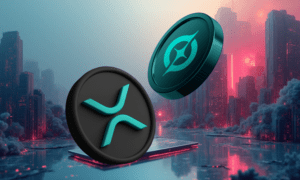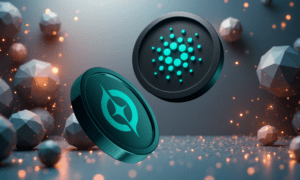Avinash Kumar, a top software engineer with a background at Amazon, Microsoft, and Google, talks about creating scalable distributed systems, encouraging innovation, and leveraging AI to design stronger infrastructures, all while paving the way for technological growth
In a time when technology keeps moving forward fast, strong and flexible distributed systems form the backbone of digital transformation. Businesses now handle more complicated data and use artificial intelligence more than ever. As a result, the need for people skilled in creating and improving key systems has grown. According to a recent report, “Cloud Computing Market Industry Trends and Global Forecasts to 2035,” published by Research and Markets, the global cloud computing market is expected to hit $3.50 trillion by 2035. This growth comes from the rising demand to scale and create new computing solutions across industries. While the cloud computing market races toward $3.50 trillion by 2035, the real engineering happens at a much more granular level—like designing systems that can process millions of shipments without breaking. This is the domain where Avinash Kumar has built his expertise. At Amazon, Kumar spent almost 10 years building tier-1 services. He led the redesign of a key shipment data platform that tracked the life of a shipment, making it capable of processing over a million shipments every hour. On the Prime Video Live Streaming team, he scaled backend systems and built features to improve viewing, earning a patent for his work. His brief stint at Microsoft sharpened his abilities in cloud services and Office 365 encryption, where he improved diagnostic tools to make systems easier to monitor and debug. Now at Google Cloud, Google’s suite of public cloud computing services, he spearheads automation for Google Cloud Platform (GCP) resource availability using Terraform and works on advanced AI tools to generate Terraform code, thus addressing the growing challenges of distributed systems. We spoke with Avinash Kumar to explore his thoughts on tackling tough technical problems and leading advancements in distributed systems.
Kumar, you worked at Amazon, helping it generate millions in revenue. What do you see as the most common architectural mistake businesses make when scaling distributed systems in today’s fast-changing digital world?
Oftentimes, businesses don’t design for failure scenarios. They also don’t anticipate bottlenecks in the process. Many systems are built on the assumption that they’ll always run with little stress while overlooking sudden surges or component failures. At Amazon, my team encountered a shipment fulfillment bottleneck that posed a serious business risk. We redesigned the workflow to remove that bottleneck. This fixed the problem and also protected the company’s reputation and delivery commitments. This redesign allowed the system to manage millions of shipments and brought in millions in revenue.
At Google, you played a key role in accelerating GCP resource support in Terraform and developing an internal AI-powered tool that automated support coverage analysis. These efforts helped large organisations adopt cloud infrastructure more quickly and reliably. How did that experience shape your approach to solving complex architecture problems and streamlining enterprise workflows through automation?
My hands-on work in these big and diverse environments has been key. At Microsoft, I worked to improve system observability within Office 365. The goal wasn’t just gathering extra data but making sure it was shown in a way that shortened issue diagnosis times—from days to just minutes—even for large-scale services. This effort saved engineers from spending long hours creating reports and made debugging quicker. That led to better customer service. Then at Google, my efforts to speed up access to GCP resources in Terraform played a big role in boosting how often people use GCP products. Many customers rely on Terraform with GCP today, and I’ve played a key role in making that process smooth and contributing to the growth of GCP.
Your work on subtitle processing for low-memory devices stands out for its originality and real impact. By reducing file sizes and improving playback on older smart TVs, you helped make Prime Video more accessible to millions. Your patent-backed solution sets a new benchmark for efficient subtitle delivery in streaming. How do you see your approach adapting to new platforms like wearables or in-car streaming systems?
The methods to deliver subtitles on devices with limited memory can be applied in many other cases. However, the main obstacle stays the same. You need to give users a smooth and high-quality experience despite limited resources. For wearables, the limits go beyond just memory. Battery usage and small screens also play a big role. The answer lies in shrinking file sizes more and making rendering adapt to the context. On the flip side, in-car streaming devices might struggle more with unstable connections. My method there would focus on offline caching and building systems to handle interruptions. This way, subtitles stay in sync and are usable even when there’s network failure.
Looking forward, how do you think your work, especially with AI tools that help generate Terraform code, will evolve to meet the future demands of your industry, and what major changes in the industry are guiding your plans to support engineers around the world in the future?
I’m always working on boosting team workflows and sharing best approaches to build a team culture rooted in teamwork. We host demos and give presentations about tough problems our team has tackled. These things focus on lessons we’ve learned and practical advice. These sessions, along with larger talks across the organization, help other teams try similar methods and avoid common mistakes. Looking ahead, distributed systems are becoming more complex, and AI is changing how developers work. My long-term plan is to keep creating AI tools and automated systems to make these challenges easier. This will help engineers everywhere design and launch stronger systems more often. For the future, I want to team up with others on making useful products that solve issues and give back to the community.
You’ve played a big role in scaling operations at Amazon and Google. So, what personal tips would you share with software engineers who want to use advanced cloud tech and succeed in the tough job market today?
I have three key tips for software engineers looking to grow, especially those targeting work on large-scale distributed systems. First, know the basics of distributed systems. Your focus should go beyond programming and include things like scalability, fault tolerance, and consistency patterns. Second, take on roles that help you work with real-world, high-traffic systems, as this hands-on experience is hard to replace. Finally, mastering cloud-native development and infrastructure-as-code principles is critical. Knowing tools such as Terraform has become an essential part of building reliable and efficient systems.





























